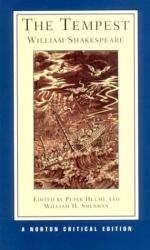|
This section contains 4,870 words (approx. 17 pages at 300 words per page) |

|
SOURCE: "The Tempest," in Shakespeare's Late Plays, edited by Richard C. Tobias and Paul G. Zolbrod, Ohio University Press, 1974, pp. 15-31.
In the following essay, Knights discusses the paradoxical elements in the structure and technique of The Tempest, focusing in particular on the unities of time and place, the use of the masque form, the treatment of music and song, and the handling of various modes of speech.
(i)
Of all the greatest works of art it seems true to say that they contain an element of paradox, that what imposes itself on our imaginations as a unified and self-consistent whole contains contradictory elements tugging our sympathies—and therefore our judgments—in different ways: part of the continuing life of the great masterpieces is due to the fact that they will not allow the mind of the reader to settle down comfortably with the sense that he has...
|
This section contains 4,870 words (approx. 17 pages at 300 words per page) |

|


